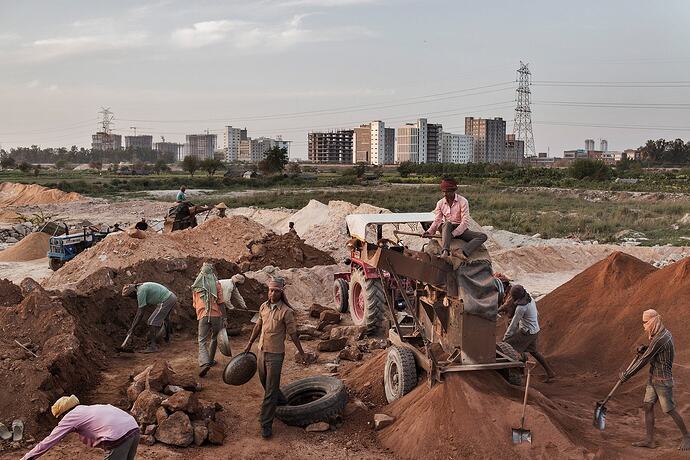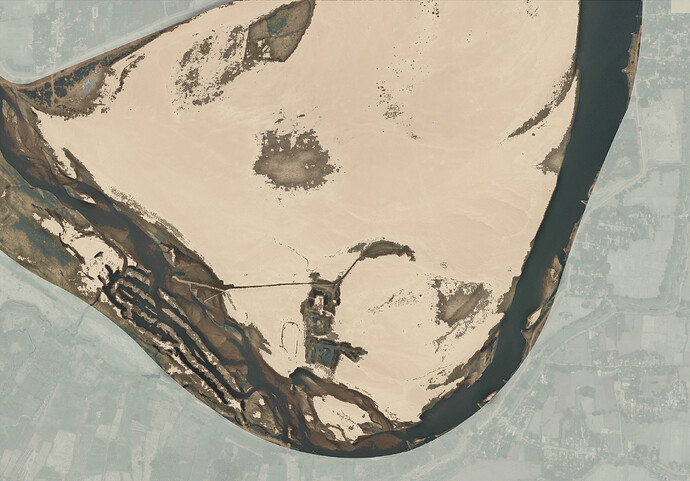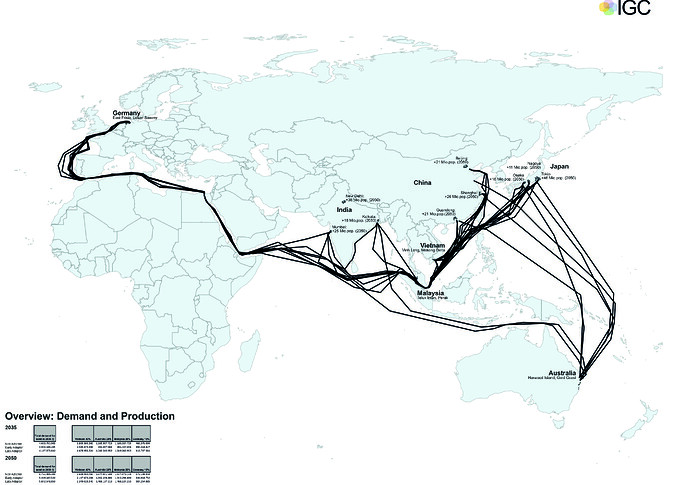Credits: Sandmining in India, Adam Ferguson, 2015
Background:
Sand is one of the most important building materials currently available in the construction industry. Civil engineering depends on sand supply because the building material is contained in many materials that are used in the construction industry. In many cases, however, the component sand is barely visible, such as in concrete. About 60% of all buildings in the world contain concrete, and in most cases, concrete consists of about 30% sand. Many industrialized nations need more and more sand due to the growing construction industries. The required sand is often imported from countries that have a small construction industry and chose to export the building material. For this reason, sand has become a globally traded commodity in recent years. The distance between the related countries is not relevant, it is still profitable to send the building material over long trade routes because the construction industries of the industrialized countries depend on the sand.
The geodesign workshop was part of the master thesis “SAND — mining | trade | consumption” authored by Adrian Lichnowski, and supervised at the Chair of Landscape Architecture and Design, Leibniz Universität Hannover, by Christian Werthmann and Jörg Rekittke.
2011
Credits: Mining effects at a river in India, Adrian Lichnowski, 2011
2017
Credits: Mining effects at a river in India, Adrian Lichnowski, 2017
Basis of the Geodesign Workshop:
The IGC workshop was based on current import and export figures as well as the average sand requirement for various building types. The goal of the workshop was to formulate an estimate of the mass of sand that will be consumed in 2035 and 2050, in order to accommodate the growing population in big cities. The choice of sand producers and sand consumers was based on reality. The workshop showed how the landscapes on each side (producers/consumers) change, and what the construction activities mean related to land use.
The cities in which the workshop investigated the situation are located in the three countries that currently consume the largest amount of concrete. These are China, India and Japan. The three most populous cities of these countries were selected as cases. The population in the selected cities is expected to grow by 2.5% each year. Rising numbers of people have to be housed in newly built apartments in the city areas. Two systems (IGC standards) are envisaged for these cities. “Low-density housing” corresponded to the accommodation of 4 people on 150 square meters with a sand consumption of 200 tons. “High-density housing” corresponded to the accommodation of 40 people in a ten-story house. 1500 tons of sand is required for 40 people in the “high-density” system.
The weighting of the two systems (low-density/high-density) is different in the three scenarios. In BAU, 100% of the growing population will be accommodated in “low-density housing”. In the LA scenario, 60% will be accommodated in “low-density housing”, and 40% in “high-density housing”. In the EA scenario, on the other hand, 40% are accommodated in “low-density housing”, and 60% in “high-density housing”.
In order to cover the calculated sand requisition, shores and coasts of four different countries are excavated to a depth of 5 meters. These countries are currently among the global top exporters of sand. For the workshop, only one system had been applied to the producers, namely “sand mining”. The current top exporters include Vietnam, Malaysia, Australia and Germany. The marked areas on the producer side show how much riparian and coastal regions will be lost by sand extraction in the future if the required masses are supplied by these four countries.
World map of the Geodesign-Workshop
Credits: Adrian Lichnowski, 2020
Result:
The result of the workshop shows that compactness of housing construction—high-density housing—and thus the elimination of development measures (infrastructure like streets, access, etc.) can reduce the sand requisition of around 20%. In the BAU scenario ((Business as usual), around 6.7 trillion tons of sand will be needed to provide the growing population with apartments by 2050. In the EA scenario (Early Adopter), only 5.8 trillion tons of sand are required for the same number of people. The difference results from a compressed and condensed typology of the future city quarters. In view of the scarcity of sand and the situation that the world population is increasing annually, no city is recommended to build new quarters of “low density” in the future.
Today, it is not feasible to do entirely without sand in the construction industry. However, sand requisition can be reduced through a planning approach that gives priority to densely populated urban dwellings. The choice of sand-consuming building materials should therefore not only be related to the specific building project, but also to the consequences in the producer countries, where sand excavation leads to massive environmental and societal follow-up costs.
Team Members:
- Adrian Lichnowski, MLA student, Leibniz University Hanover
- Hrishikesh Ballal, Managing Director, Geodesignhub, Dublin
- Joerg Rekittke, Associate Professor, Norwegian University of Life Sciences, Institute of Landscape Architecture
Credits: Cities in China, Wade Shepard, 2016




